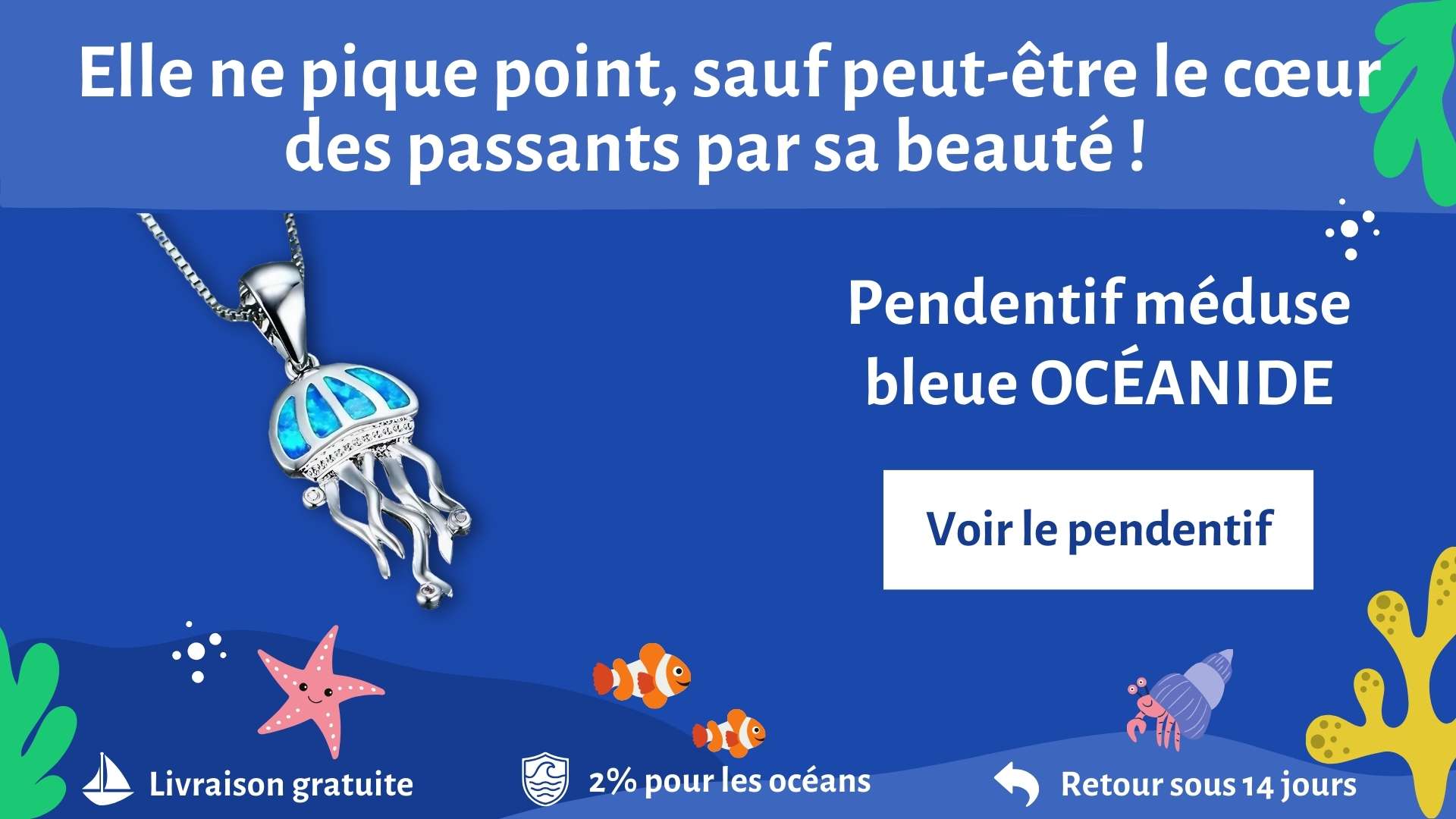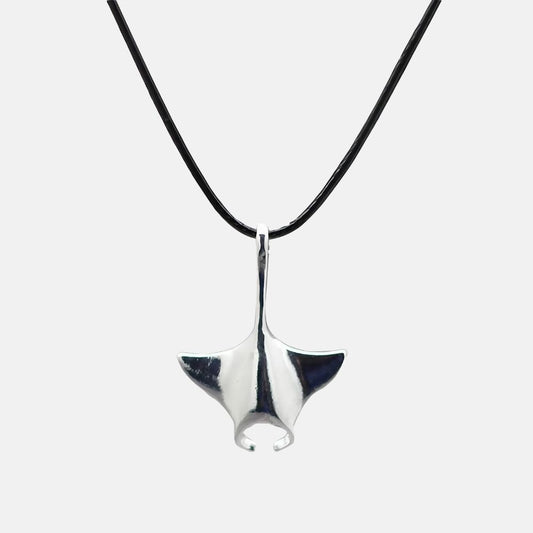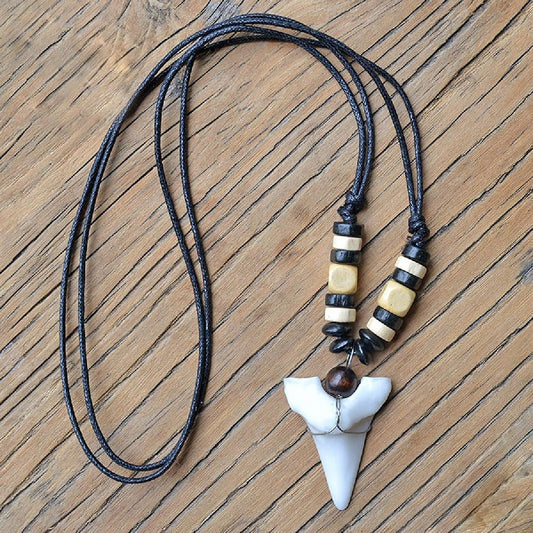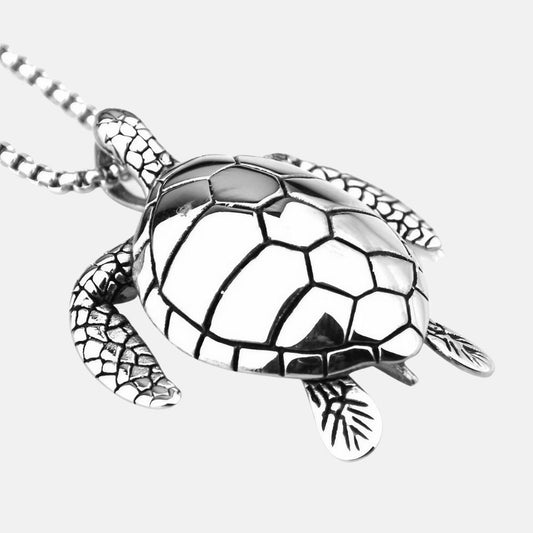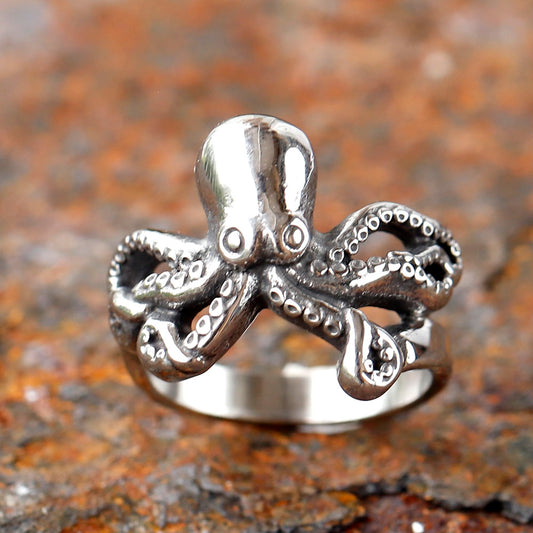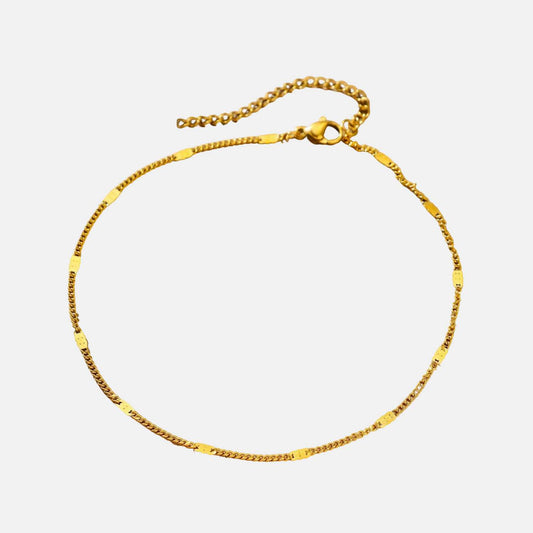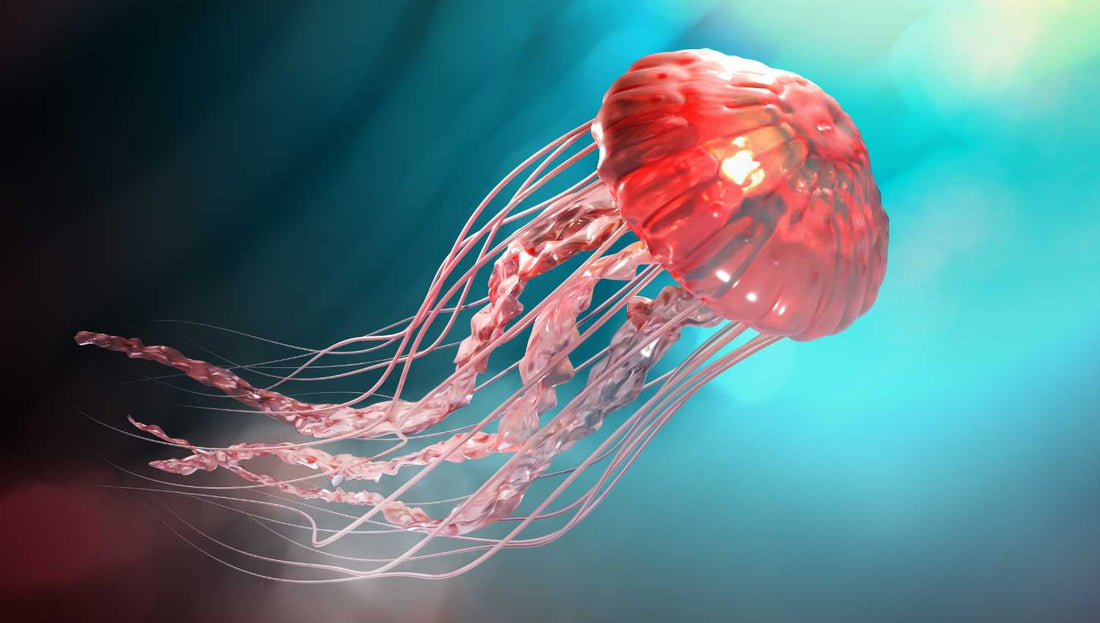
The most dangerous marine animals
Sharks may be the apex predators of our oceans , but they are far from the deadliest sea creature. In 2022, 11 people have lost their lives to shark attacks, but it is estimated that between 50 and 100 people die each year following an encounter with the Australian box jellyfish.
According to the World Health Organization ( WHO ), shark bites are usually isolated, non-fatal incidents, but can result in serious injuries and amputations. Source: https://www.who.int/news-room/questions-and-answers/item/sharks
Appearances can be deceiving, and many of the deadliest sea creatures appear harmless or even welcoming . Prepare for some surprises as you uncover the secrets of the world's most dangerous sea creatures, starting with the least harmful and working your way to the deadliest.
Cubozoa (box jellyfish)
The tiny box jellyfish , also called a " sea wasp ", is barely visible to the naked eye, but can kill an adult in less than three minutes. The Irukandji jellyfish is one of 51 different species of box jellyfish, and although its average size is only one cubic centimeter, it is just as deadly as its three-meter-long cousin, Chironex fleckeri .
A study on Chironex fleckeri found that its venoms are mixtures of bioactive proteins that attack different parts of the box jellyfish victim. One of them causes pain, another attacks red blood cells , while another "produces intense muscle spasms" that lock the heart in a state of permanent contraction.
This combined assault on the victim makes box jellyfish stings difficult to treat. Because the heart is contracted, cardiopulmonary resuscitation and defibrillators do not work.
In April last year, a 17-year-old Australian man died after being stung by a box jellyfish Chironex fleckeri off the northern tip of Australia . A few months later, a nine-year-old Israeli boy died after being stung off the coast of Koh Phangan Island in Thailand . Regulating these incidents reinforces how dangerous these jellyfish are.
-
Size : The size of the cubozoa varies between 2 cm and 30 cm in width, depending on the species.
-
Number : There is no exact number of cubozoa in the oceans, but they are relatively rare compared to other groups of jellyfish.
-
Where to find them : Cubozoa can be found in the warm, shallow waters of oceans all over the world, including Central America, South America and the Caribbean.
-
Colors : Cubozoa colors vary depending on the species, but they can be translucent, yellow, orange, red or green.
-
Number of species : There are approximately 20 different species of cubozoa known to date.
The octopus with the blue rings
The blue-ringed octopus is not much bigger than a golf ball, but it contains enough venom to kill more than 20 people. Unlike the pufferfish , which does not actively use its venom for anything, the blue octopus harvests it on purpose and uses it to paralyze its prey.
These octopus species store bacteria collected from the ocean in their salivary glands. There, the bacteria secrete tetrodotoxin . Using its beak to penetrate the shell of its prey, the octopus then injects venom by spitting into its victim. This process paralyzes its prey almost instantly.
If a blue-ringed octopus bites a human, the tetrodotoxin in its saliva will have the same effect as on its prey: paralysis . Within five to ten minutes after the bite, you will begin to feel tingling or numbness at the site of the attack.
This leads to difficulty breathing and swallowing, followed by “ flaccid paralysis ,” meaning all of your smooth muscles relax. Although the seizure does not affect your heart, it attacks your diaphragm, making it difficult to breathe.
These life-threatening symptoms typically last four to ten hours, after which the victim shows rapid signs of improvement. Despite the severity of the symptoms and the toxicity of the venom, only three people have died from a blue-ringed octopus bite .
-
Size : The size of the blue-ringed octopus can reach up to 1.5 meters in length, although most individuals measure around 50-60 cm.
-
Number : There is no exact number of blue-ringed octopuses in the oceans, but they are considered quite abundant in some areas.
-
Where to find them : The blue-ringed octopus can be found in tropical and subtropical waters around the world, including Southeast Asia, Oceania, and the Indian Ocean.
-
Colors : The blue-ringed octopus has contrasting blue rings on a cream or white background, with dark spots visible on the rings.
-
Number of species : There are approximately 50 species of octopus in the genus Hapalochlaena, but the blue-ringed octopus is the best known and most widely distributed.
Stonefish
The stonefish is the most venomous bird in the world, the stonefish uses its venom to escape its predators . As its name suggests, stonefish are almost indistinguishable from stones and rocks found on the sea floor. It uses its impressive camouflage to ambush its prey, but often unsuspecting humans accidentally lay hands on it.
When this happens, the stonefish triggers a potentially fatal reaction. By raising its 13 dorsal spines , it injects venom from the sacs located at the base of each spine. The effect is distressing and, within minutes, your foot swells to three times its normal size.
Treatment for a stonefish sting begins with immersing the affected limb in very hot water . This process deactivates certain components of the venom, after which antivenom can be administered.
Although stonefish stings are rarely fatal, they can cause shock , breathing problems , nausea and vomiting, as well as fainting, delirium and paralysis.
-
Size : Stonefish vary greatly in size depending on the species, ranging from less than 10 cm to more than 1 meter in length.
-
Number : There is no exact number of stonefish in the oceans, but they are quite common in many coastal areas.
-
Where to find them : Stonefish can be found in shallow waters and coral reefs all over the world, especially in the tropical and subtropical regions of the Indian Ocean and Red Sea.
-
Colors : Stonefish color varies greatly depending on the species, ranging from gray, brown, yellow, green, blue and bright red.
-
Number of species : There are approximately 100 species of stonefish known to date.
Cone snail
Snails are among the last creatures you would expect to hold the title of the world's deadliest marine animal. Yet within their patterned shell, these harmless creatures keep a deadly secret .
Cone snails live near coral reefs in tropical waters, such as those of the Pacific and Indian Oceans. Cone snails use a sharp proboscis in their mouth to deliver a deadly sting to their prey.
It then attracts its prey towards it using a sharp barbel located at the end of the proboscis. Once the fish is completely paralyzed, the cone snail widens its mouth and swallows it whole.
Of course, cone snails don't prey on humans, but their attractive shells often attract people to them and get stung while handling them. According to a study published by the National Center for Biotechnology Information, the first symptoms of a cone snail sting are pain or numbness at the wound site.
These quickly worsen and victims begin to exhibit "generalized muscular paralysis, respiratory failure, cardiovascular collapse and coma ." The NCIB also notes that "if the patient is not treated, death is rapid and often occurs within one to five hours."
-
Size : The size of the cone snail varies depending on the species, but generally they range from 2 to 10 cm in length.
-
Number : There is no exact number of cone snails in the oceans, but they are quite common in some areas.
-
Where to find them : Cone snails can be found in shallow waters and coral reefs throughout the world, including tropical and subtropical regions of the Indian Ocean and Red Sea.
-
Colors : The colors of cone snails vary greatly depending on the species, but they can be bright colors such as red, green, blue and yellow.
-
Number of species : There are approximately 600 species of cone snails known to date

Sea Serpents
There are over 50 different species of sea snakes , all of which are highly venomous. Although they are generally more timid than aggressive, sea snakes may bite if surprised or threatened.
The Dubois sea snake is the most venomous and contains a powerful neurotoxin that causes breathing problems and "paralysis of the diaphragm and skeletal muscles.
Compared to their land cousins , sea snakes have very small teeth, so a human can be bitten without realizing it. It was only once the first symptoms appeared that he became aware of the seriousness of his situation. A sea snake bite may look like a simple pinprick , but within three hours the victim will experience the following symptoms :
- Sore muscles
- Paralysis
- Painful joints
- Blurred vision
- Difficulty speaking and swallowing
- Excessive saliva production
- Vomiting
The bite of a sea snake is potentially fatal, although the overall mortality rate is only 3% . The sooner the victim receives professional medical care and antivenom , the better their chances of survival.
-
Size : Sea snakes vary greatly in size depending on the species, ranging from less than 1 meter in length to more than 10 meters in length.
-
Number : There is no exact number of sea snakes in the oceans, but they are quite common in some tropical and subtropical regions.
-
Where to find them : Sea snakes can be found in coastal waters all over the world, including the tropical and subtropical regions of the Indian Ocean and the Red Sea.
-
Colors : Sea snake colors vary greatly depending on the species, ranging from green, brown, gray, dark blue to banding or spotting patterns.
-
Number of species : There are approximately 70 species of sea snakes known to date.
Floral sea urchin
The flower urchin is an attention-grabbing killer that looks innocent, but its flower-shaped tentacles contain a powerful toxin. These tentacles, called globiferous pedicellariae, can inject a dangerous toxin if agitated or touched.
The potency of the venom is linked to the size of the pedicellariae that administered it. Any sting from a floral sea urchin causes pain and paralysis . In 1930, a Japanese marine biologist, Tsutomu Fujiwara , stuck 7 or 8 sea urchin pedicellariae in his finger.
He felt instant, excruciating pain there and, shortly after, began to feel dizzy and have difficulty breathing. His lips, tongue and eyelids were also paralyzed, preventing him from speaking. These symptoms began to subside after about 15 minutes, and an hour later they were all gone except for the facial paralysis .
Considered the most dangerous sea urchin in the world, the flower sea urchin can kill a human, but not with its toxin. Instead, debilitating pain, muscle paralysis , breathing problems, numbness and disorientation can lead to accidental drowning.
-
Size : The size of the flower urchin varies depending on the species, but in general they are approximately 10 cm in diameter.
-
Number : There is no exact number of floral sea urchins in the oceans, but they are quite common in some areas.
-
Where to find them : Floral sea urchins can be found in shallow waters and coral reefs all over the world, especially in the tropical and subtropical regions of the Indian Ocean and Red Sea.
-
Colors : The colors of floral sea urchins vary greatly depending on the species, ranging from brown, green, blue, bright red to banded or spot patterns.
-
Number of species : There are approximately 200 species of floral sea urchins known to date
Stingray
Known as the cat of the ocean , the stingray looks no less intimidating. Since the unfortunate death of Steve Irwin in 2006, the whole world has become aware of the danger they can represent. The Australian conservationist and television personality died after a jagged barb from a stingray's tail entered his heart.
The stingray's venom causes extreme pain and swelling at the site of injury, but is rarely fatal. There are approximately 1,500 stingray-related injuries in the United States each year, most occurring when a human accidentally steps on a submerged stingray .
Rays cover themselves with sand to hide from potential predators. They are therefore often difficult to see. If a barb from a stingray's tail embeds into your foot, it will cause a cut or puncture . The venom is found in the sheath that covers the stinger. If this venom enters the body, it causes severe pain and potential damage to muscles and tendons.
Depending on the severity, some stingray injuries can be treated at home, but the pain is so severe that most victims need to see a doctor .
-
Size : The size of the stingray varies depending on the species, but in general they measure between 1 and 2 meters in length.
-
Number : There is no exact number of stingrays in the oceans, but they are relatively common in some areas.
-
Where to find them : Stingrays can be found in shallow waters in tropical and subtropical regions around the world, including the Atlantic and Indian Oceans.
-
Colors : Stingrays are usually a gray or dark brown color with patterns of dark spots or bands.
-
Number of species : There are approximately 80 species of stingrays known to date.
Pufferfish
Despite their almost cute appearance, pufferfish are the second most venomous vertebrates in the world. Some varieties of puffer fish are only an inch long but contain enough toxin to kill up to 30 adult humans.
Pufferfish contain tetrodotoxin, a substance that is 1,200 times more toxic than cyanide . Fortunately, this substance not only escapes from their skin but is contained in their liver and sexual organs .
That doesn't stop some people from eating them, though. Only trained chefs are allowed to prepare fugu, a Japanese delicacy, although many try, unsuccessfully, to prepare it themselves. Between 2006 and 2015, 10 people died after eating pufferfish they had prepared themselves.
According to licensed chef Yoshitaka Takahashi, "the hardest part is making sure that the parts that can be eaten are absolutely healthy."
There is no known antidote to tetrodotoxin which, if ingested, causes localized numbness around the mouth, nausea, salivation and vomiting. These indications generally appear within 45 minutes of eating the puffer fish.
In severe cases, these symptoms continue to worsen, leading to widespread paralysis, loss of consciousness, and respiratory failure.
-
Size : The size of pufferfish varies depending on the species, but in general they measure between 15 and 30 cm in length.
-
Number : There is no exact number of pufferfish in the oceans, but they are relatively common in some areas.
-
Where to find them : Pufferfish can be found in shallow waters in tropical and subtropical regions throughout the world, including the Pacific and Indian Oceans.
-
Colors : Pufferfish have bright and varied colors, ranging from green, yellow, blue, red, purple to spot or band patterns.
-
Number of species : There are approximately 120 species of puffer fish known to date.
Lionfish
There are 12 recognized species of Pterois or lionfish , all of which are characterized by their bright , showy coloration and spike - like fin rays. Originally from the Indo-Pacific region, two invasive species of lionfish are now wreaking havoc in the Caribbean and the Mediterranean .
With no known predators, lionfish consume large quantities of invertebrates, molluscs and small fish. The lionfish's venomous dorsal, anal, and pelvic spines deter most potential predators and are responsible for its inclusion in our list of the most dangerous sea creatures .
Lionfish are not aggressive , but their spines contain a nasty neuromuscular toxin that is reminiscent of cobra venom. Symptoms of a lionfish sting include tenderness , swelling, and severe injury to the wound area. These symptoms usually last a few hours, but in severe cases they can persist for up to 30 days.
A sting involving multiple thorns increases the risk of infection and causes additional symptoms, such as abdominal pain, sweating and changes in heart rate.
Lionfish stings are rarely fatal, although a person who has been exposed to repeated stings may experience anaphylactic reactions upon subsequent envenomation .
-
Size : The size of lionfish varies depending on the species, but in general they measure between 20 and 40 cm in length.
-
Number : There is no exact number of lionfish in the oceans, but they are relatively common in some areas.
-
Where to find them : Lionfish can be found in shallow waters in tropical and subtropical regions around the world, including the Indo-Pacific Oceans.
-
Colors : Lionfish have bright and varied colors, ranging from yellow, red, blue, green to spot and band patterns.
-
Number of species : There are approximately 29 species of lionfish known to date.
Sharks
Sharks rarely attack humans, especially considering how much time we spend together in the water. Nevertheless, large species like the great white shark and tiger shark pose a threat to swimmers , surfers and divers , especially when visibility is poor.
Most shark attacks occur relatively close to the beach and are usually due to misidentification. These hit-and-run attacks are rarely fatal. In the Florida Museum of Natural History's annual summary of global shark attacks for 2021, there were only 11 deaths out of 137 shark-human interactions.
-
Size : Sharks vary in size depending on the species, ranging from a few centimeters to over 12 meters in length.
-
Number : There is no exact number of sharks in the oceans, but they are present in all seas around the world.
-
Where to find them : Sharks can be found in almost all salty waters around the world, including oceans, seas and coral reefs.
-
Colors : Sharks vary in color, from dark gray, black, brown, white to spot and band patterns.
-
Number of species : There are approximately 500 species of sharks known to date.
As soon as we think about the dangers of our seas, our minds tend to immediately drift to the shark. This article proves that there are many other sea creatures that we should fear more than the great white. The deadliest ocean creatures are not the ones that scare us the most, but those that possess toxins that can cause us great harm.
The box jellyfish, blue-ringed octopus, and even the humble stonefish don't attack humans on purpose, but if we venture into their natural habitat , the chances of our encounters increase.
Most people survive an interaction with one of the most dangerous ocean creatures, but they never forget them and are much more cautious when entering the sea after experiencing one .

